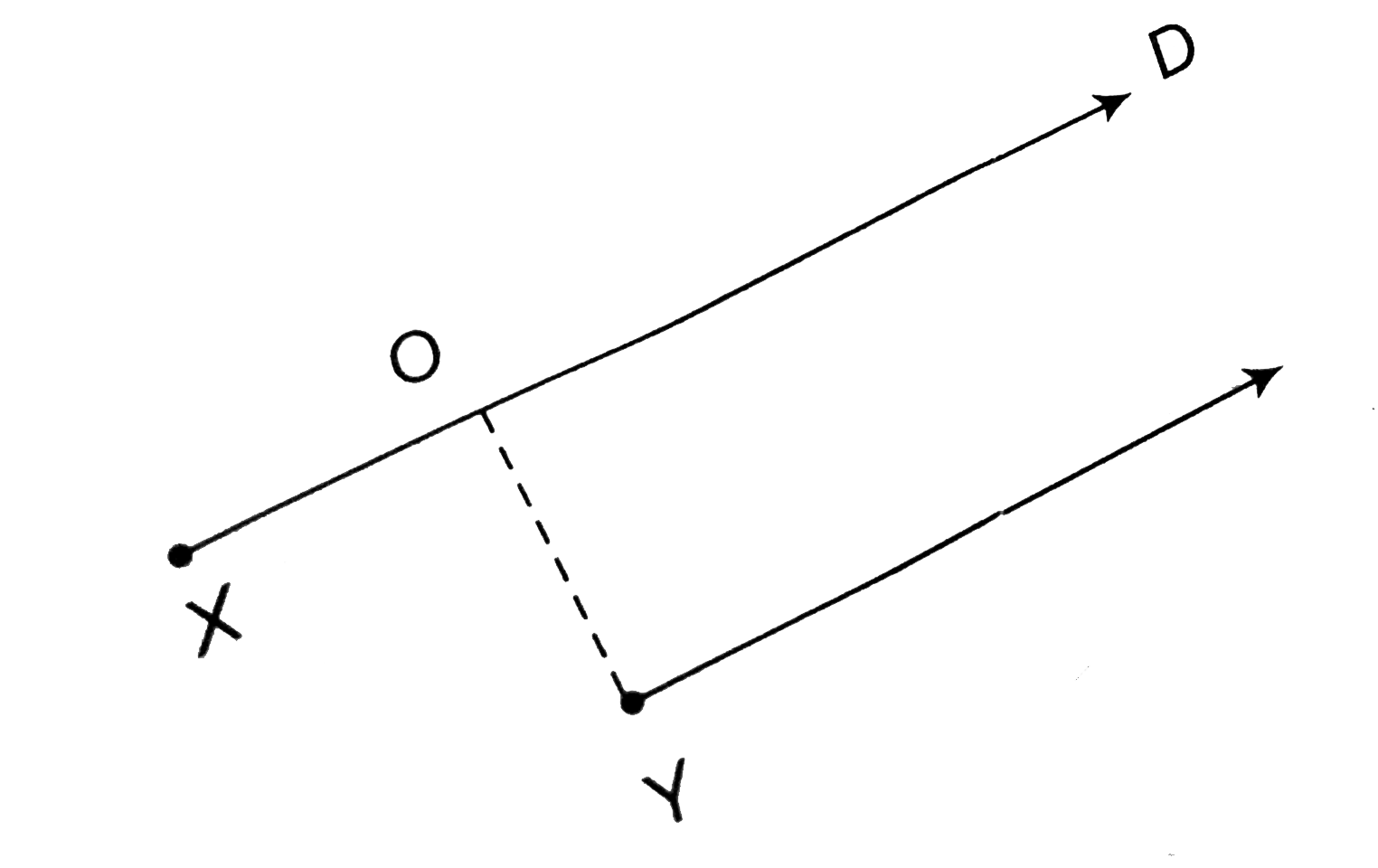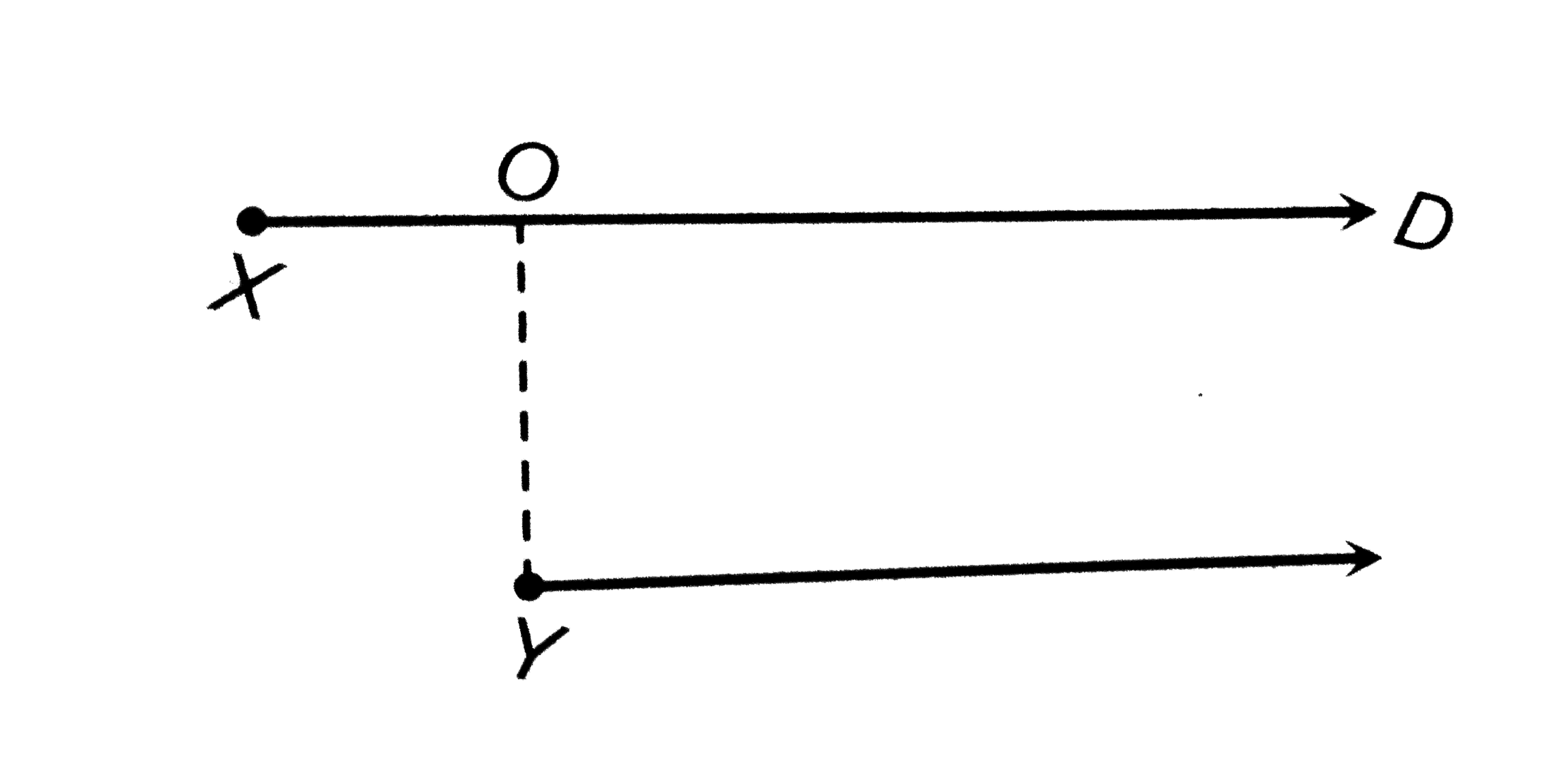Two point sources X and Y emit waves of same frequency and speed but Y lags in phase behind X by 2πd radian. If there is a maximum in direction D, the distance XO using n as an integer is given by

λ2(n−l)
λ(n+l)
λ2(n+l)
λ(n−l)
The correct Answer is:B
ϕ=2πλΔx−2πl
2πn=2πλ(OX)−2πl
OX=λ(n+l)
Topper's Solved these Questions
Similar Questions
From two sources, sound waves of frequency 270 Hz are emitted in phase in the positive direction of an x axis. At a detector that is on the axis and 5.00 m from one source and 4.00 m from the other source, what is the phase difference between the waves (a) in radians and (b) as a multiple of the wavelength?
View SolutionWhen an alternating voltage of 220 V is applied across a device X, a current of 0.25 A flows which lags behind the voltage in phase by π2 rad. If the same voltage is applied across another device Y, the same current flows but now it is in phase with the applied voltage.
(a) Name the devices X and Y.
(b) Calculate the current flowing in the circuit when the same voltage is applied across the series combination of X and Y.
View Solution
Knowledge Check
Two point sources X and Y emit waves of same frequency and speed but Y lags in phase behind X by 2π/radian. If there is a maximum in direction D the distance XO using n as an integer is given by
 A(a) λ2(n−l)B(b) λ(n+1)C(c) λ2(n+1)D(d) λ(n−1)
A(a) λ2(n−l)B(b) λ(n+1)C(c) λ2(n+1)D(d) λ(n−1)When two waves of the same amplitude and frequency but having a phase difference of ϕ, travelling with the same speed in the same direction (positive x), interfere, then
Atheir resultant amplitude will be twice that of a single wave but the frequency will be sameBtheir resultant amplitude will both be twice that of a single waveCtheir resultant amplitude will depends on the phase angle while the frequency will be the sameDthe frequency and amplitude of the resultant wave will depends upon the phase angle.Two sinusoidal plane waves of same frequency having intensities I0 and 4I0 are travelling in the same direction. The resultant intensity at a point at which waves meet with a phase difference of zero radian is
AI0B5I0C9I0D3I0
The phase difference between the two light waves arriving point is 2nπradians. The condition for maximum intensity of light at that point is
View SolutionA source of sound emits waves with frequency f Hz and speed V m / sec . Two observers move away from this source in opposite directions each with a speed 0.2 V relative to the source. The ratio of frequencies heard by the two observers will be
View SolutionTwo sinusoidal waves have the same angular frequeny the same amplitude ym, and travel in the same direction in the same medium. If they differ in phase by 50∘ the amplitude the resultant wave is given by
View SolutionTwo waves of same frequency and same amplitude from two monochromatic sources are allowed to superpose at a certain point. If in one case, the phase difference is 0∘ and in other case it is π2, then the ratio of the intensities in the two cases will be
View SolutionTwo waves of same frequency and same amplitude from two monochromatic sources are allowed to superpose at a certain point. If in one case the phase difference is 0 and in other case it is π/2 then the ratio of the intensities in the two cases will be
View Solution